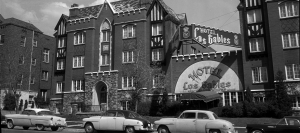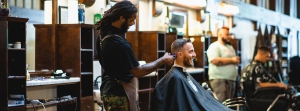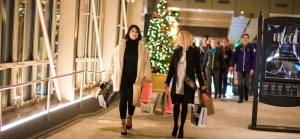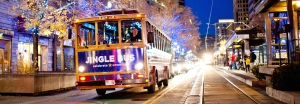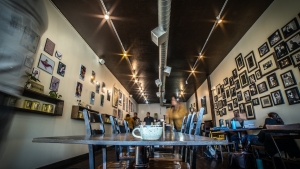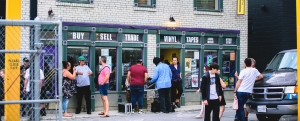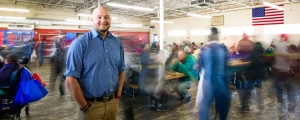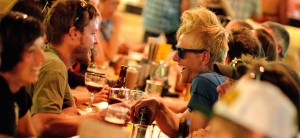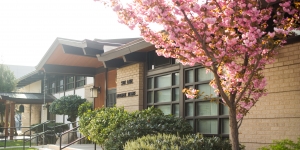DTA Staff
Salt Lake City’s recent boom in downtown apartment living echoes a similar heyday that took place 100 years ago. Between 1910 and 1940 the city’s population increased from 92,000 to 140,000 and investments in amenities like streetcars and paved sidewalks fueled a bustling business district. Construction of the city’s first apartment buildings soon following and were completed in two general phases: the first from 1904 through the start of World War I, and then another flurry from the early 1920s until World War II.
These new urban dwellings boasted luxuries that many rural Utahns had never before experienced: innovative frills such as “disappearing” Murphy beds, Frigidaire refrigerators, electric ranges and on-site laundry machines. The interiors were upscale for the time, with glass interior doors, hardwood floors, casement windows, chandeliers and tiled bathrooms. “There’s always somebody home in an apartment,” advertised the Apartment House Association of Utah. “It’s nice to return at night to well-lighted corridors and know that help if needed can be quietly summoned.”
The early apartment buildings were designed as either walk-ups with one or two entrances on each landing or as a double-loaded corridor plan with multiple entrances along a central hall. Architects took advantage of Salt Lake’s deep blocks, fitting the long, narrow apartment buildings on lots where a home and a garden or corral where located previously. After growing up on farms or pioneer homes, downtown apartment living represented an exciting new approach to residential life that everyone from young married couples to recent immigrants were interested in. Fortunately, many of these beautiful vintage apartment buildings still line our streets, reminding of us of the elegance of a bygone era.
The Pauline apartment building at 278 E. 100 South was one of the first to be built in 1904, closely followed by the La France at 246 W. 300 South and the twin buildings of the Altadena and Sampson, at the corner of 300 South and 300 East.
Walk down 300 East today and you will see other lovely historic apartment buildings, with their leaded glass windows, Colonial Revival balconies and ornate entrances. Keep strolling over to 235 S. 200 East and you’ll happen upon the Woodruff apartments, a luxury for the time it was built in 1908. “The building will be steam-heated, you will have hot water ready at all times of day or night, as well as free janitor and night watchman service, telephone and gas range … you will save on coal bills, water, telephone, streetcar fares and other incidentals, will reduce your costs of living, and you will have all the comforts besides,” read a 1908 newspaper ad for the Woodruff. It advertised specifically to “young men looking for desirable apartments close to their work.” Abe Gross and his young wife, Vera, lived in Unit 60 at the Woodruff in 1930 when they first moved to Salt Lake from Chicago. They spoke Polish and English; Abe worked as a truck driver and cattle buyer. Sadly, Abe was killed in a truck accident in 1935 shortly after their son was born, after which Vera moved back to Chicago.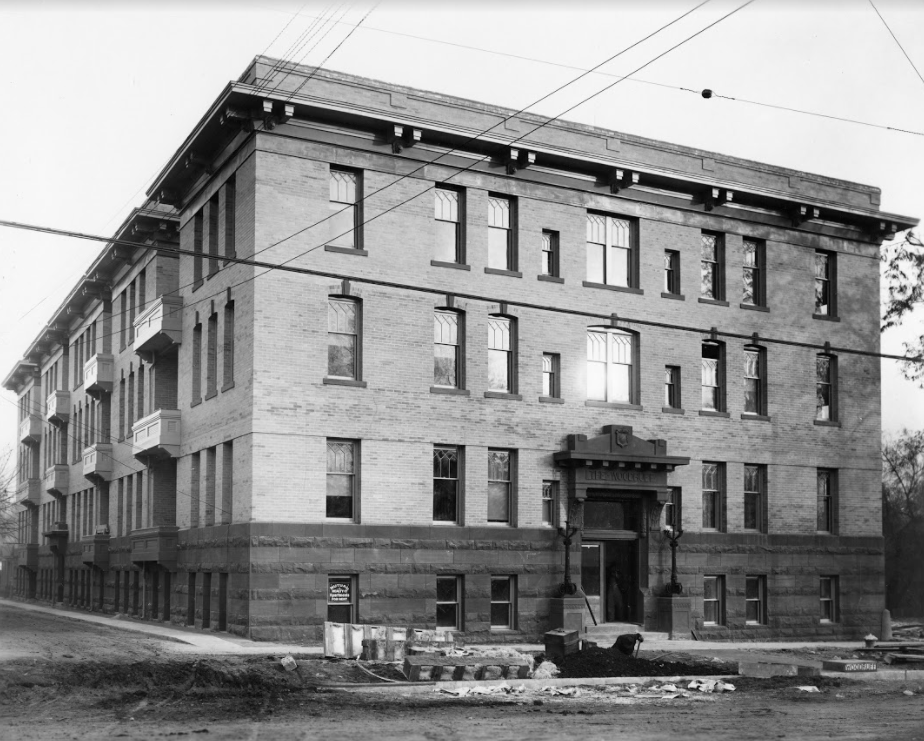
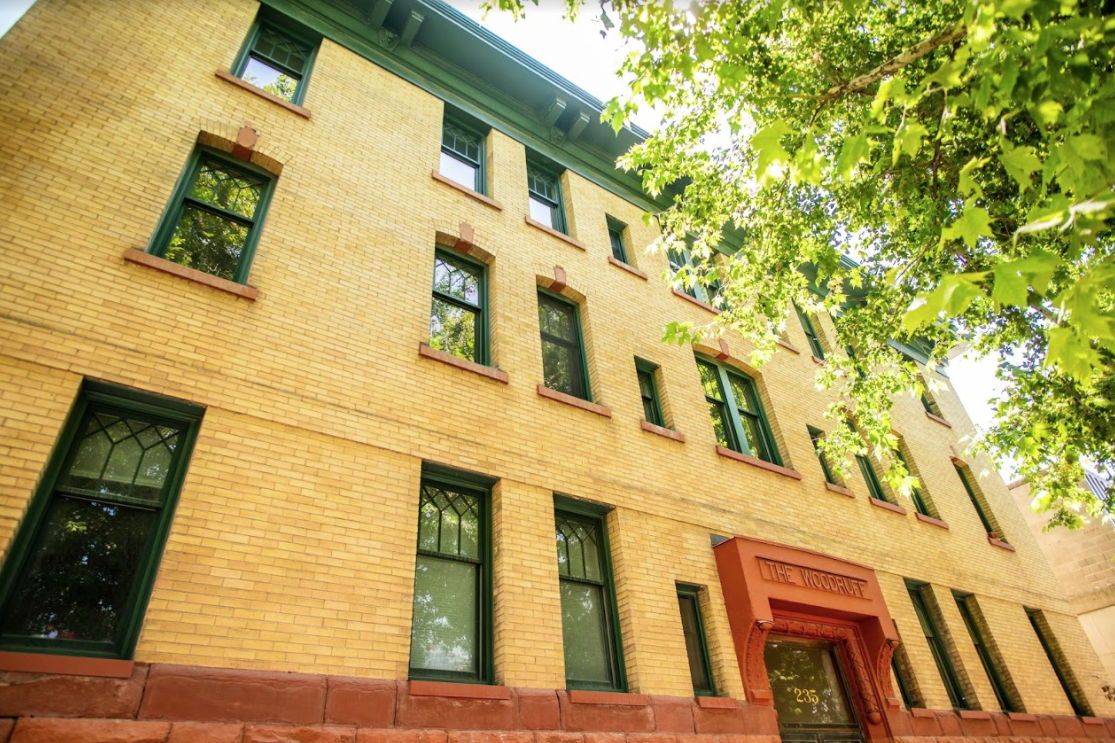
The decorative elements of the turn-of-the-century apartments are striking. Most have the original light posts and fixtures, doors and tiled entries. Note the French door balconies, intricate brick patterns and neon sign at the Embassy Arms, 120 S. 300 East. Venture over to the Piccardy at 115 S. 300 East and you will find a Jacobethan Revival style with twisting columns and large finials, arched windows and an imposing sign over the door. Often the buildings were given creative names to convey sophisticated style, such as the Belvedere (29 S. State), the Hollywood (204 East 100 South) and the Silverado (243 South 300 East).
The Los Gables, built in 1929, occupies nearly half a block at 135 S. 300 East, making it one of the largest early complexes. Note the Moorish arched entrances, stonework and unusual timbering detail around some of the upper windows. Newly married couple Larry and Rosalee Hunt lived in Unit 605 during 1959 when they came from St. George so Larry could serve in the Army at Fort Douglas. The rooms were advertised as “an address to be proud of” with “reasonable monthly rents” of $40.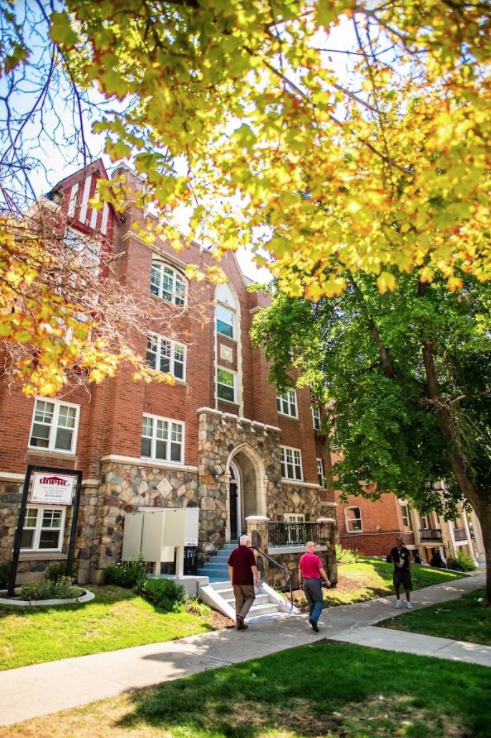
The investors who started Salt Lake’s first apartment boom included local families such as the Coveys, Downings and Sampsons, along with out-of-state financers from California. Several prominent builders constructed most of Salt Lake City’s original apartment buildings, such as W.C.A. (Andy) Vissing, who came to Salt Lake City from Denmark as a 14-year-old, formed his own contracting company and made his fortune by building more than 20 apartment buildings over the course of his career.
The Covey family, led by entrepreneur brothers A.A. Covey, S.M. Covey and H.T. Covey, built apartments to last. All of their early-twentieth-century buildings are still standing and used today—the La France, Hillcrest, New Hillcrest, Kensington, Buckingham and Covey. The Covey Apartments on South Temple were considered the most elegant of the group, even featuring a passenger elevator to serve the seven floors. As you walk by the Covey entrance at 239 East S. Temple, relish the brickwork, gargoyles and wrought-iron balconies. Imagine the first tenants moving into the nearby Hillcrest apartments on First Avenue with its windowed sleeping porches, beautifully-landscaped interior courtyard and private garages out back. The Coveys expected their on-site managers to do everything from mopping hallway floors to delivering ice to residents’ kitchen iceboxes.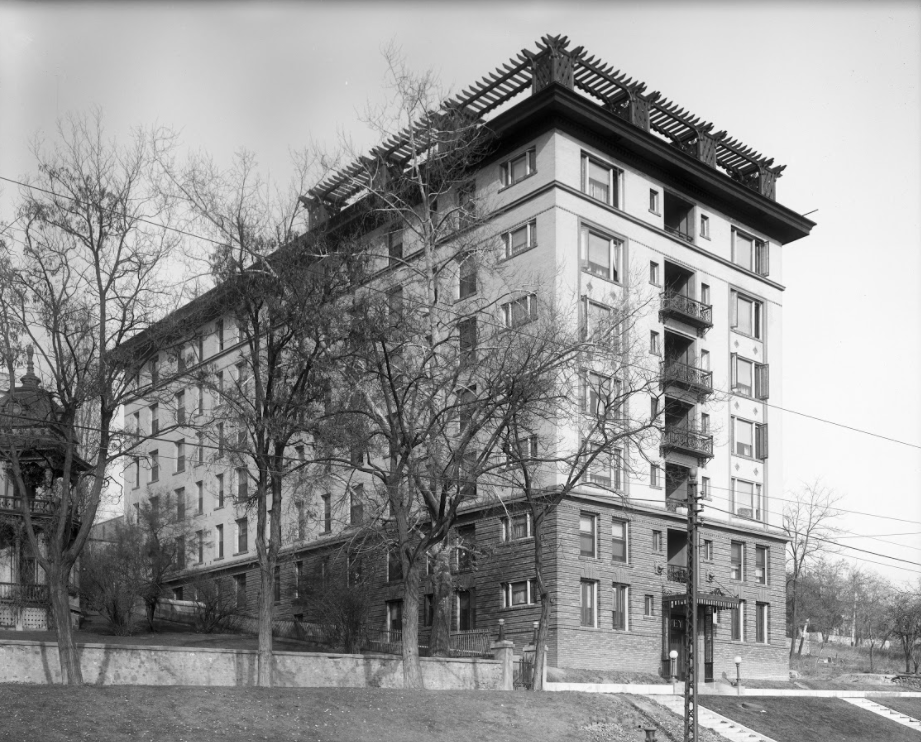
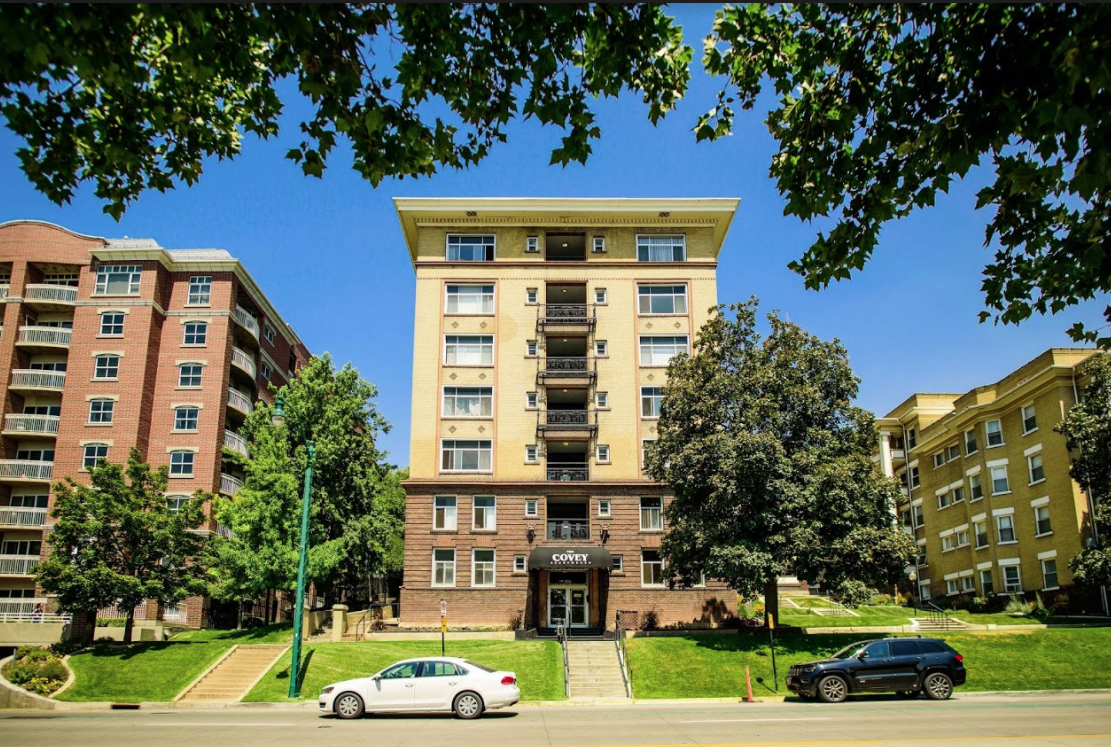
With the advent of The Depression, funding for new construction evaporated. And then, after World War II residents wanted cozy bungalows in the suburbs, which were suddenly more affordable with federal loans. Downtown apartment construction declined further and the occupancy patterns changed dramatically.
By the turn of the twenty-first century, some of these grand old buildings became stylish condominiums, while others serve as low-income or affordable housing. Owners are taking care to maintain the unique architectural features and advertise the historic beauty of the structures. At least 73 of the downtown apartment buildings are listed on the National Register of Historic Places. In 2014, the city adopted design guidelines for the buildings to emphasize their “distinctive urban scale and presence.” The more than 100 historic apartment buildings still in use today are a vivid reminder of the boldness and style with which Salt Lake City entered the twentieth century.
Shave, Haircut & More
Five locales where dapper downtown dudes go for a spruce up!
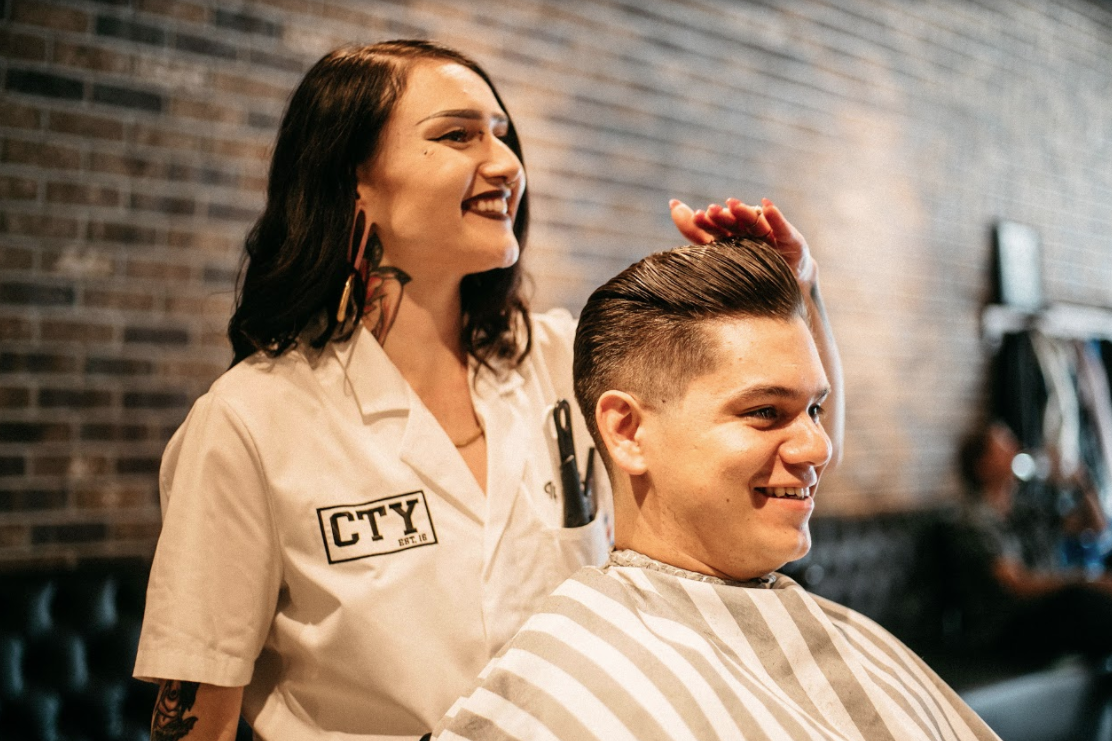
The muted tones of cordial conversation mingles with the buzz of electric clippers, the snip, snip of scissors and the occasional snap of a hot towel as it’s cooled before being carefully placed on a client’s face. Such is the scene at many of Salt Lake City’s thriving barber shops. But don’t expect the same one-size-fits-all experience you may have had when accompanying your dad to a barbershop as a kid. Today’s barber shops, while solidly targeting men, are more akin to salons, offering a full-service experience that goes well beyond haircuts to beard trims, skin care, waxing and more. Following are five downtown shops redefining what it means to be a man.
Kristina Wells, founder of Barbiere (341 W. Pierpont Ave, #2, 385-240-5104, barbiereslc.com), offers the classic barbershop experience along with modern cuts for all hair types in a light and airy setting. Wells’ product selection is huge: if you’re looking for rare beard oil or a styling gel that’s not too wet nor too dry, this is the place.
City Barbers (241 E. 300 South, 801-243-6915, citybarbers.co) is an authentic barbershop with Old-World charm. Vintage barber chairs from the 1920s, paired with grooming products from around the globe, make a visit there like nothing else in Salt Lake City. Every barber ion the shop has International accreditation in men’s classic barbering haircutting styles. 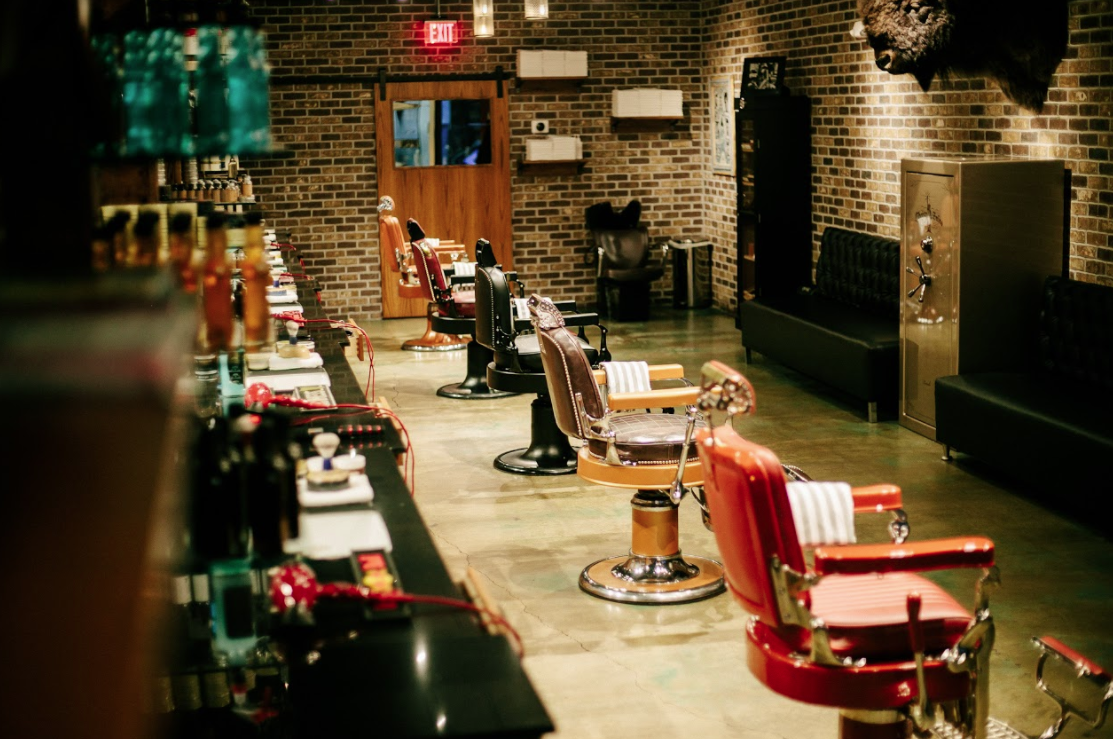
Located in the heart of downtown Salt Lake City, Deseret Barber Shop (135 Social Hall Ave, 801-328-1910, deseretbarbershop.net) is one of Salt Lake City’s longest-running. The original shop opened in Deseret Gym in 1910, and even though the gym has long since gone and the shop is now located in the City Creek Center, the owners honor tradition by keeping the name and offering precision haircuts and hot lather neck shaving.
The beginnings of Ray's Barber Shop (154 S. Main St, 801-359-7297, raysbarbershopslc.com) date back to 2005, when Ray Francom, a third-generation barber form Wyoming, opened up shop in Salt Lake City. What began as a one chair shop in the foothills, has now grown to three locations in Salt Lake City and Ogden, employing more than 30 professional barbers. Ray’s downtown location is a nostalgic barber shop that will remind you of the traditional shops of the past with trained barbers who know and understand modern styles, giving you the best of both worlds.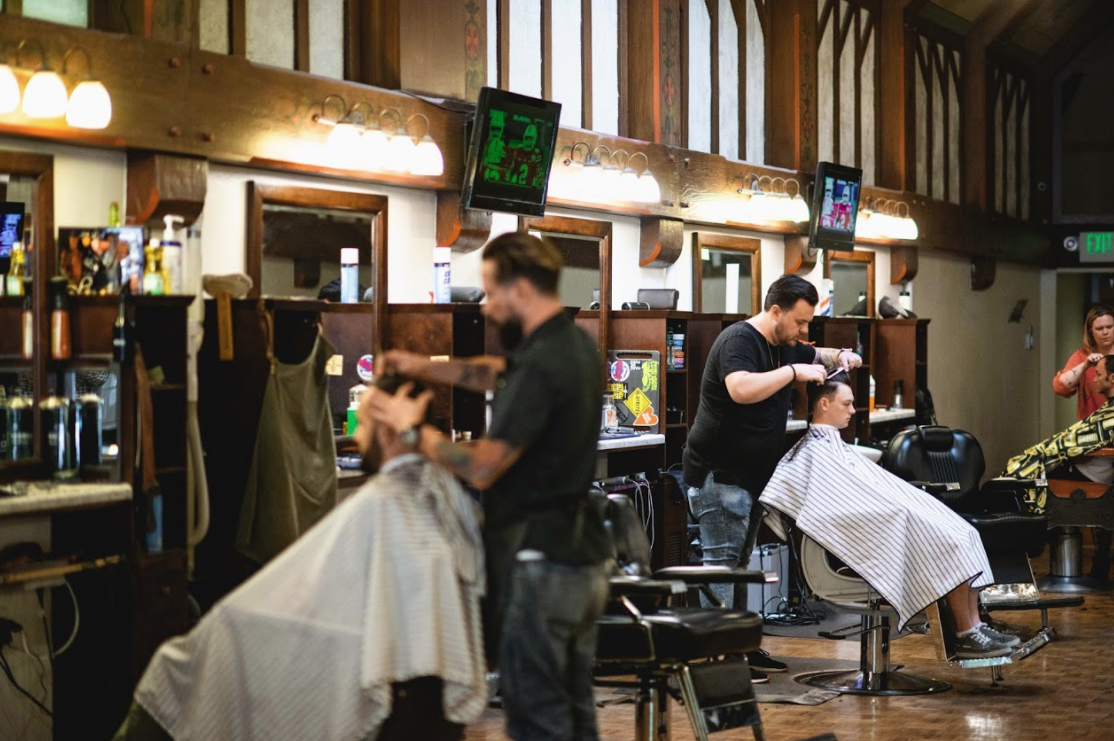
Step inside The Bureau Barber + Shop (281 S. Weechquootee Place, 801-410-4007, bureaubarbershop.com), and you’ll blood pressure is sure to immediately drop. Clean white walls punctuating by shiplap and marble accents create a serene and welcome backdrop for indulging in some serious ‘me’ time. At The Bureau, classic meets modern with premium quality, every time.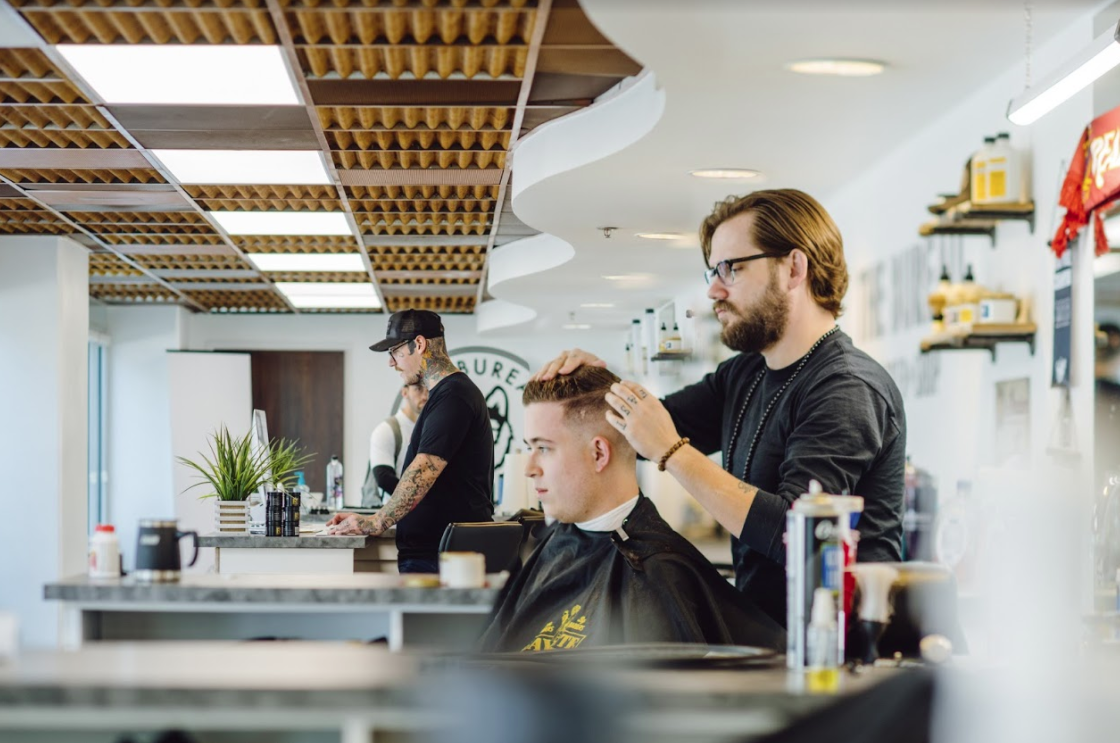
Last Minute Shopping Tips
Haven’t had time to complete your holiday shopping or just getting started? We’ve got the inside track for all of the holiday shopping procrastinators out there!
City Creek Center:
Find something for all of your friends and family at City Creek Center. Enjoy free two-hour parking while you browse over 100 local and national stores. Be sure to check out the brand new Bonobos store for all of the gentlemen in your life. See a full store list and sales going on at https://www.shopcitycreekcenter.com/stores/directory
The Gateway:
Home to several new exciting tenants like Dave & Busters and classics like G-Star and Bastille, The Gateway offers several unique shopping opportunities. Look no further than the new location of Salt & Honey Market! Featuring handmade arts, crafts, jewelry and more, Salt & Honey features goods from DIY’ers from across Utah. Not only are you picking up a thoughtful gift, but you’re also helping support local artists and creators. Learn more at http://shopthegateway.com/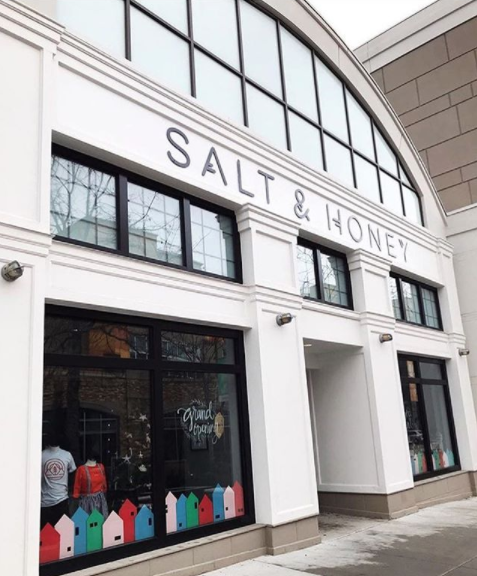
Holiday Art & Craft Market at the Downtown SLC Winter Farmers Market:
Head down to the Winter Farmers Market at the Rio Grande Depot to find dozens of artisanal goods in addition to some tasty food and small-batch products. Saturday at the Rio Grande Train Depot from 10 AM - 2 PM during the last Holiday Art & Craft Market of the season.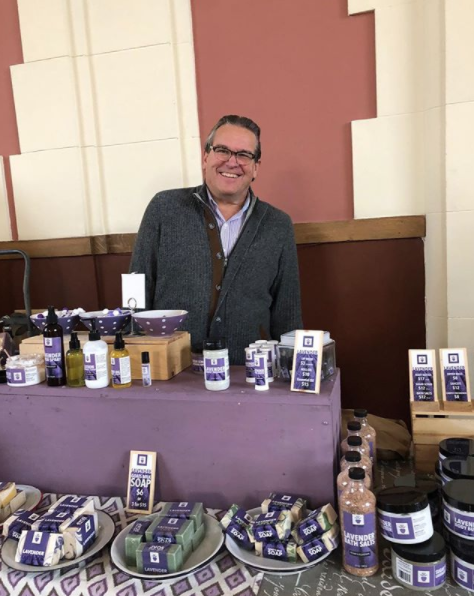
Participating Vendors:
Ceramica Artistica ASV - https://www.facebook.com/CeramicaArtisticaASV/
Addley Craft - https://addley-craft.com/
Live Your Angle - http://liveyourangle.com/
Heidi Israelsen - https://www.hiceramics.com/
Sticks and Stones Design - https://www.sticksandstones.design/
Beaucoup de Bijoux, LLC - https://www.etsy.com/shop/beaucoupdebijoux
The Wild Seed - https://www.etsy.com/shop/TheWildSeedCo
Steel Design - https://www.facebook.com/utahart/
Laura Sommer Creative - https://www.laurasommerartist.com/
Velo City Bags - https://velocitybags.com/
Lazy Llama - https://www.llalpacawear.com/
Lance Olsen - Colorbox
Rex Burningham / Burning Bowls and Boards - http://www.learningturning.com/
Don’t forget your reusable bag! Help The Market reduce their carbon footprint by bringing your own cloth bag to shop with.
Broadway District:
Home to several notable downtown SLC businesses like Ken Sanders Books and The Green Ant, the Broadway District is a great option for thoughtful and unique gifts. You’ll also find the People’s Coffee, City Barbers, Jitterbug Antiques & Toys, Fellow Shop, Antoinette’s Jewelry, Boozetique and more. Consider this an artisanal mini-mall with gifts for all ages.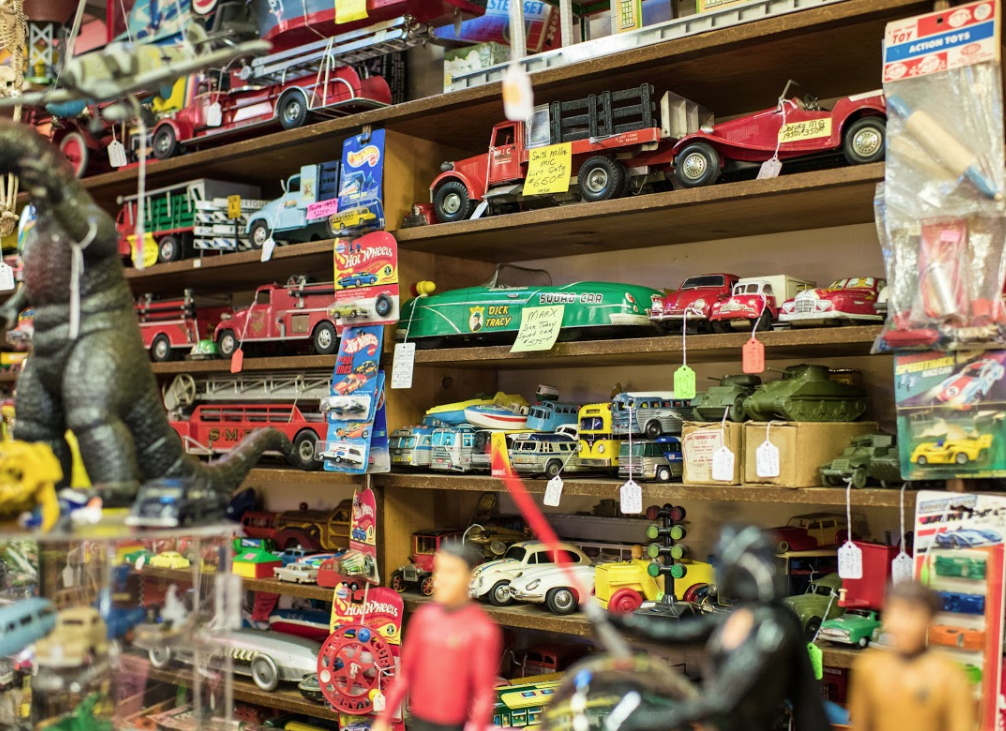
Gift Certificates to your favorite restaurants, bars and coffee shops:
Can’t think of what to give? Give the gift of food! Downtown SLC is home to dozens of amazing restaurants, bars and coffee shops. Rest assured, this is one gift you can be sure won’t be regifted.
How to Holiday
The holidays are in full swing here in downtown SLC. From shopping and holiday sightseeing to dining and drinking at our top-notch restaurants and bars, there is no shortage of holiday cheer for all your friends and family! To keep every face merry and bright, we're here to offer a few tips on How to Holiday downtown this season.
Getting Around Downtown
With so much to do downtown, it may seem nearly impossible to see everything on your list (and stay warm while doing it). But never fear – Jingle Bus is here! Jingle Bus is a free, holiday-themed ride circulating between The Gateway, Temple Square, City Creek Center, Gallivan Plaza and Capitol Theatre. Downtown visitors and shoppers will find this free service especially useful for getting to-and-from downtown’s two malls, as well as enjoying the abundant holiday lights and storefront decorations.
Jingle Bus runs from 5 PM–10 PM, 7 days a week (except for Christmas Day) free of charge, courtesy of the SLC Downtown Alliance, City Creek Center, The Gateway and other generous sponsors. Check out a map of Jingle Bus stops here.
Parking Downtown
Did you know downtown has over 55,000 on- and off-street parking spots? That means there are plenty of places to park if you are driving to get to downtown. There are several parking garages throughout the city with the most notable being City Creek Center, The Gateway, and the Regent Street Garage. Remember, on-street parking is free after 8 pm!
City Creek (50 South Main): Just south of Temple Square, this is downtown’s largest and most central parking garage. Entrances to City Creek Center can be accessed from West Temple, South Temple, 100 South and State Street. Parking is free for the first two hours and is $2 for every hour after. If you happen to be dining at City Creek Center, there are a handful of restaurants that can validate. City Creek Center has over 5,000 parking spaces and real-time signs indicating available spots for quick and easy navigation.
Regent Street Garage (55 East 200 South): Just south of City Creek Center, the Regent Street Garage is accessible via both Regent Street, between 100 and 200 South between State and Main Street, or Orpheum Avenue from State Street. The cost of parking is $2 per hour.
The Gateway (400 West 100 South): Hosting a multitude of events this holiday season, you’ll want to be sure to check out The Gateway! Their garage can be accessed from 100 South, 400 West and 200 South. With the first hour free, the cost of parking is $2 per hour thereafter.
*Keep in mind, there are a number of other parking garages and lots available around downtown with varying prices. Most average about $2-4 per hour, and some require proof of payment to be placed face-up, on the dash of your car.
Transit
Want to avoid a parking headache all together? The Salt Lake Valley has a plethora of Park-n-Ride TRAX Stations to help you ditch your car this winter. Check out a map of Park-n-Ride Stations here. Consider hopping on the train with the whole family and taking a leisurely ride into downtown. Don’t forget, UTA has a Free-Fare Zone so you can use TRAX and buses within the downtown area free of charge. See a map of the Free-Fare Zone here. See other UTA Schedules here.
Traditions Downtown
Every year downtown fills with holiday shoppers, art lovers and adventure seekers alike. If you’re looking for that something extra to build upon your downtown holiday traditions, check out a few of our favorite things:
Lights, Candy Art, Murals and the Last Hurrah!
You may be among the throngs that enjoy the dazzling lights and charming creches at Temple Square. After taking in the dazzling light display, hop over to view an assortment of intricate, holiday-themed candy creations at City Creek Center. Local artists have created beautiful candy dioramas in the Macy’s windows on Main Street just below South Temple.
Need more visuals? Take a tour of our favorite downtown murals and street art. You can guide yourself through the city using an Interactive Map found at https://theblocksslc.com/map/ and find the following works:
SLC Pepper by Jann Haworth - 250 S. 400 W.
The many murals at The Gateway - 400 W. 100 S.
Salt Palace Subway by Traci O’Very Covey, Chuck Landvatter, Evan Jed Memmott, Matt Monsoon, Jimmi Toro and Alexis Rose - 40 S. 200 W.
Utah Jazz mural by Trent Call - 100 S. Main Street
Ave Maria by El Mac and Retna and various murals - 160 E. 200 S. (go down the alleyway!)
Murals at Ken Sanders Rare Books - 268 S. 200 E.
Skip the Times Square ball-drop this New Year’s Eve and head down to The Gateway for Last Hurrah! This popular local celebration features live music, cultural performances, food, drinks and more. Last Hurrah is the largest NYE celebration in Utah and is free and open to the public from 8 p.m. - midnight.
Holiday Treasure Hunting
Up your gift-giving game this year and get your friends and family something made by a local artist or craftsperson! Check out these galleries for beautiful and meaningful gifts: Modern West Fine Art, Hope Gallery, Southam Gallery, God Hates Robots, Urban Arts Gallery, Michael Berry Gallery, Art Access and Art At The Main.
Galleries aren’t the only places where you can purchase artwork. You will find retailers across downtown with works from local artists.
Want to give the gift of performance instead? Tickets to a performance from any of our celebrated resident companies are sure to be a hit! Upcoming 2019 performances include:
Repertory Dance Theatre - Emerge, Jan. 4-5 / Voices, Apr. 11-13
Ririe-Woodbury Dance Co. - The Live Creature and Ethereal Things, Feb. 1-2 / Bloom, Apr. 18-20
Pygmalion Productions - Wait, Feb. 21-Mar. 9 / Sweetheart Come, May 2-19
Plan-B Theatre - An Evening With Two Awful Men, Feb. 21-Mar. 3 / ...Of Color, Mar. 28-Apr. 7
Ballet West - Swan Lake, Feb. 8-23 / Choreographic Festival, May 9-11
Utah Opera - Mozart’s The Magic Flute, Mar. 9-17 / Bellini’s Norma, May 4-6
Utah Symphony - Brahms’ Violin Concerto, Feb. 22-23 / Harry Potter and the Goblet of Fire, May 4-6
How to Give Responsibly During the Holidays
When enjoying the holiday magic in downtown Salt Lake City, generous Utahns are often prompted to help people who need shelter, a meal, warm clothing or health care. Speaking plainly: giving to a panhandler does not help that person; it perpetuates their living on the street. There are wonderful service providers in our community that reach out daily to those in need and are truly helping by providing shelter, housing, healthcare, clothing and meals.
Here are six ways to give direct support to effective service providers. You can give knowing that your gift will truly help those in need.
Home4change.org -- Larry H. and Gail Miller Family Foundation:
During the holiday season, you can double your donation when you give to Home 4 Change. Thanks to a generous contribution from the Miller Family Foundation, every dollar you donate here will be matched, dollar for dollar, until the $10 million dollar goal is reached.
Give at home4change.org
HOST (Homeless Outreach Service Team):
The Homeless Outreach Service Team, aka HOST, is a partnership with the SLCPD and homeless service providers to connect homeless individuals with social services and resources. 100% of donations go to the Pamela J. Atkinson foundation and are dispersed to local homeless services providers.
Give at https://slchost.org/
Candy Cane Corner:
The Candy Cane Corner provides a holiday shopping experience for families participating in services at the YWCA, the Road Home and VOA Youth Resource Center. Shoppers can pick out a variety of toys and clothes to give one another and stay warm during the cold winter months.
See their top 10 donation needs and give at http://candycanecornerslc.org/donation
Giving Machine:
In the lobby of the Joseph Smith Memorial Building, you’ll find two vending “giving” machines stocked with philanthropic opportunities. You can choose from local and global giving options that range from food and medicine to soccer balls, eye care and more.
Learn more about the giving machines at https://www.mormon.org/christmas/giving-machines
Utah Food Bank:
Last year, the Utah Food Bank distributed 32.7 million meals. Organize your family and friends and hold your own food drive or donate at any Harmons grocery store. Cash donations allow the food bank to buy in bulk and provide more meals for more people.
Give at utahfoodbank.org
Volunteer:
Many Utah service providers rely heavily on volunteer work to operate their programs. Serve a dinner or help with activities and programming. Learn more about service providers that accept volunteers at the HOST website.
Word on the Street - Festive Finds
Downtown Salt Lake City is alive and thriving as ever! While we recently witnessed the closing of a classic restaurant, The New Yorker, we are continuing to experience the lasting legacy of the vibrant culture it helped to launch many years ago.
Some restaurants have moved locations to allow for larger crowds or more convenient service. Other restaurant groups are opening new locations to keep up with the increasing and evolving demand. We continue to see growth of the dining and nightlife along Main Street, especially between 300 and 400 South. And of course, the folks over at The Gateway are working hard to make it a commercial and entertainment destination on the west side of downtown with multiple openings and announcements in recent months. Many of these openings come just in time for the busy holiday season, but don’t expect them to stop any time soon! We look forward to sharing a lot more with you at the start of the new year.
Recently Opened
Alibi Bar & Place | 369 South Main Street
Alibi is a welcome addition to the resurging “Whiskey Street” section of Main Street. Though quaint, the bright space adds a new vibe to add to your bar route. Its size may mean it fills up quickly, but that could also be due to the selection of inexpensive wines and craft cocktails whipped up by expert bartenders.
Anson Calder | 50 South Main Street (At City Creek Center)
New York-based Anson Calder recently moved the fulfillment and operations of its premium leather goods to Utah. Soon after, the brand opened up an exclusive, experiential retail location at City Creek Center to show off its goods to the public. You’ll be able to witness on-site monogramming as well as demonstrations of burnishing, skiving, sewing, and even leather splitting at the store. Though you can buy online from anywhere, this is the only place you’ll be able to see the experiments and prototypes for yourself!
Button Down | 122 Pierpont Avenue
Sports bar, meet nightclub. Button Down brings together the best of both worlds, featuring an upscale sports bar setting that turns into a nightclub for the weekends. You no longer need to choose between dancing and watching the game! Button Down regularly hosts watch parties and other events, including a weekly Wine Down Wednesday.
Caffe Molise & BTG Wine Bar | 404 South West Temple
One of downtown’s favorite restaurants just got a serious upgrade. You have probably seen the large banner on the side of the historic Eagle Building for a while now, but the renovation is finally complete. In case you’re worried about the loss of incredible outdoor dining, the new Caffe Molise also boasts an impressive patio. The open layout includes a ballroom on the top floor that can be reserved for private events. Head downstairs for BTG Wine Bar, which is sure to please any wine lover.
Christopher’s Prime Tavern & Grill | 110 West Broadway
Another relocated downtown restaurant, Christopher’s has taken over its old location at Peery Hotel. You can expect the same delicious menu with even better service than ever before.
City of Industry | 209 East Broadway
Joining a large number of local shops along Broadway, City of Industry is an outlet for makers and hobbyists. Products range from pins, patches, stationery, and other unique goods you won’t find anywhere else. The store is currently open for business on weekends, leaving plenty of opportunities to find a perfect gift.
The Daily | 222 South Main Street
The Copper Onion team has done it again. The quirky cafe features a simple but chef-driven menu utilizing fresh, local ingredients. The Daily offers an impressive selection of teas, coffee, and cold-pressed juices in addition to gourmet grab & go options. You’ll also want to try the baked goods, which are as tasty as they are beautiful.
Embers Boutique | 281 South Weechquootee Place
Ladies, if you’re looking for some unique flair to add to your wardrobe, stop by Embers in Gallivan Plaza. The small fashion shop has an eclectic selection of clothing and accessories that will surely make you stand out from the crowd.
Kiln | 26 South Rio Grande Street (At The Gateway)
A coworking community originally launched in Lehi, Kiln opened its doors late last month at The Gateway. While surely not the first coworking space in downtown, it has a local touch that will surely appeal to professionals in the city. Private, resident and club memberships provide the flexibility for you to choose how you work. Kiln also has an on-site cafe (see Voro Café below) and plenty of event space, so look out for a number of community events there!
Ramen Bar | 319 South Main Street
This is the second location for the popular Ramen Haus in Ogden. Following on the current ramen trend, Ramen Bar offers an affordable, yet gourmet selection of ramen. You’ll also find an assortment of other Japanese specials, including a delectable honey toast for dessert.
Rugged Grounds Outpost | 29 East 400 South
It may be hard to believe, but this coffee shop came to SLC from Provo. Serving local Great Basin Coffee, Rugged Grounds also offers a selection of tea and kombucha and a basic menu of comfort food.
Salt & Honey Market | 111 South Rio Grande Street (At The Gateway)
Following up on its popular pop-up markets, Salt & Honey recently opened a permanent retail location at The Gateway. The shop curates products from a number of local makers with the goal of helping creative professionals establish their own successful businesses. You can find everything from home decor and kitchen items to jewelry and stationery every day. Also check out special events, such as the Christmas Makers Market.
Sonoma Grill | 110 West Broadway
Another project from the group behind Christopher’s, Sonoma Grill boasts an eclectic, farm-inspired menu. The wine bar offers an impressive selection of wines to pair with your dinner and is available for private events. Its old-world charm is the perfect complement to Peery Hotel and the downtown dining scene.
Voro Café | 26 South Rio Grande Street (At The Gateway)
Located inside the new Kiln space, Voro Café fuses together elements of Italian and Brazilian cuisine for a unique breakfast and lunch spot. The café will offer Campos coffee along with a variety of teas and raw-pressed juices with easy access for both Kiln tenants and the general public.
Opening Soon
Fat Boy Phillies | 400 South State Street
Fat Boy Phillies opened its first location in Murray to rave reviews earlier this year. Now it’s opening shop downtown on the corner of 400 South and State Street. Our mouths are already watering for some nice, juicy cheesesteaks!
Kazé Sushi | 65 East Broadway
The area around Gallivan Plaza is becoming a destination of lunch spots. A new sign for Kazé Sushi can be seen just a few doors down from the recently-opened Ramen930. We don’t know much about it yet, but we are always open to the idea of some good sushi.
Punch Bowl Social | 6 North Rio Grande Street (At The Gateway)
Denver-based Punch Bowl Social recently announced its newest location at The Gateway. The adult playground features bowling, karaoke, and an assortment of other activities alongside craft drinks and artisan food. Get ready for a social scene like you haven’t seen before downtown.
Seabird Bar & Vinyl Room | 11 South Rio Grande Street (At The Gateway)
Have you noticed a trend of “At The Gateway” yet? The diverse mix of new tenants will soon include a fully-licensed bar, a sister concept to the neighboring La Barba Coffee. We hear Seabird will open its doors before year’s end, so keep your fingers crossed for some craft cocktails and rich vinyl tunes this holiday season.
Torrent Cycle (252 East Broadway)
After months of preparation, Torrent Cycle is scheduled for a grand opening on December 7! You may have noticed the pop-up on 400 South, but the new space will be sure to stand out to any fitness junkie. Don’t be afraid to work up a sweat and get your day off to a good start at the boutique cycling studio.
Do you know of a new business we missed? Got some tips of one getting ready to open? Let us know at !
Streets We Love
What used to be an unassuming alley in the heart of downtown, home to little more than a few choice parking spots for moviegoers headed to nearby Broadway Centre Cinemas, today Edison Street is flush with some of Salt Lake’s hippest hangouts.
The street is anchored on the north end by Lebanese and Moroccan restaurant Cedars of Lebanon (152 E 200 S, cedarsoflebanonrestaurant.com)—make a reservation for the weekend when kebabs and couscous are served with a side of bellydancing—and on the south end by bar/restaurant Copper Common (111 E Broadway, Ste 190, coppercommon.com). Order a round of craft cocktails (just $6 each, Sunday through Thursday) from the knowledgeable mixologists and nosh on bar snacks and small plates like house pickles, deviled eggs, and shrimp ceviche.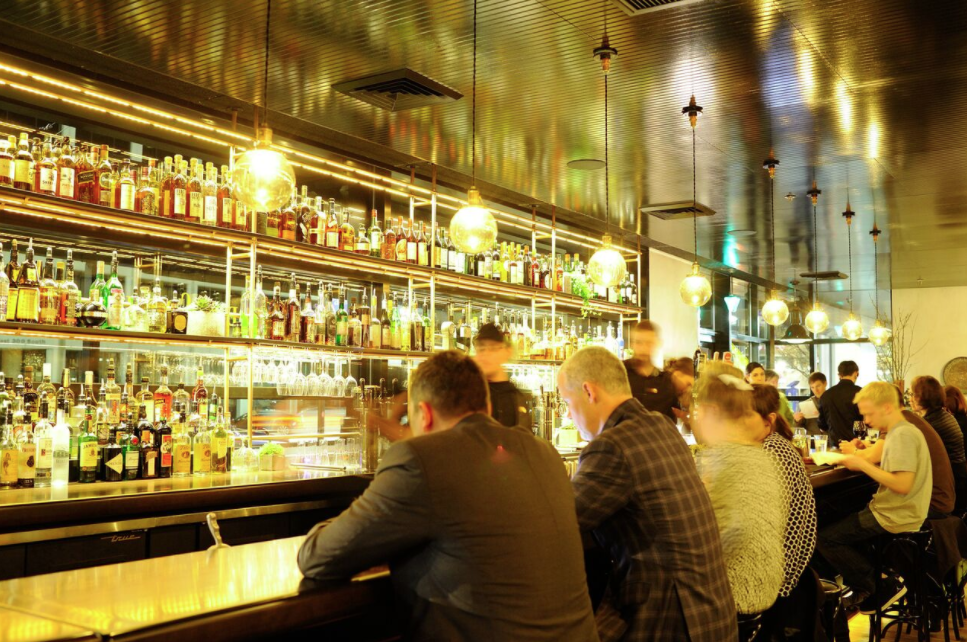
Just around the corner from Cedars of Lebanon is Sailor Taylor Tattoo (215 S Edison St, sailortaylortatttoo.com), the one-man inkery and piercing parlor of artist Taylor Millet. Across the street is Edison’s newest addition: Campos Coffee Roastery &Kitchen (228 S Edison St, us.camposcoffee.com). The urban roaster and java shop is the second stateside outpost of the Australian-based Campos brand (the first landed up in Park City). Friendly waiters with Aussie accents serve breakfast and lunch fare with a dash of Down Under flare—think dippy eggs with toast soldiers, vegemite braised short ribs with tomato sauce—not to be confused with ketchup—and Tim Tam milkshakes. If dessert for breakfast is your thing, try the Australian Iced Coffee with housemade ice cream and whipped cream.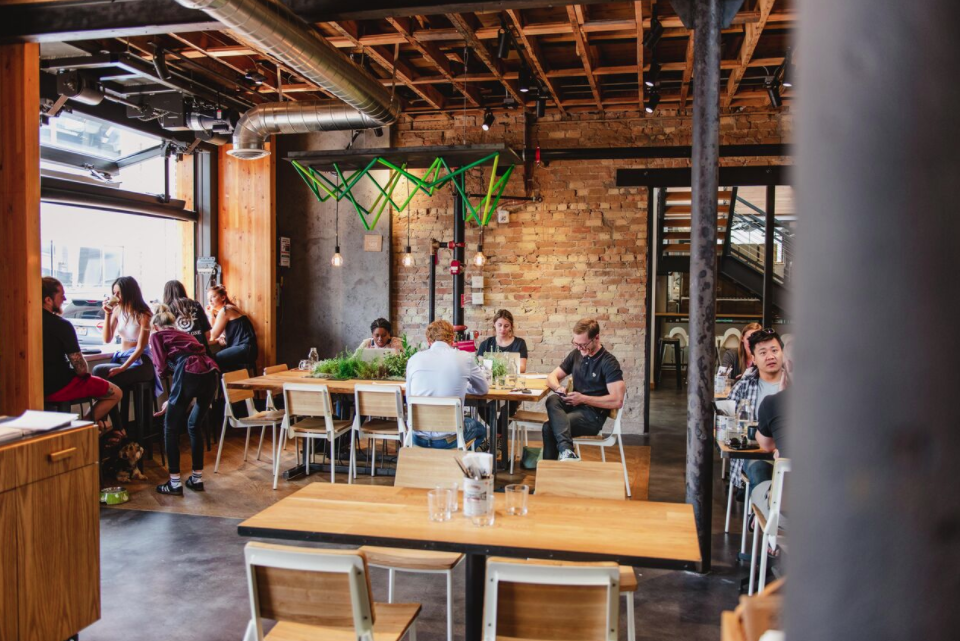
Neighboring Campos is Diabolical Records (238 S Edison St, diabolicalrecords.com). In a world where digital music is king and record stores are an endangered species, Diabolical is on the up and up thanks to their curated selection of indie music on vinyl and tape, free weekly concerts from local and touring bands, and their semi-annual Bandemonium event (July and December)—the willing are randomly paired with a local band and have two weeks to create a five- to 10-minute set, to be performed in the store. Next door to Diabolical is edgy advertising agency Super Top Secret (244 S Edison St, wearetopsecret.com). The speakeasy-like office space lends a dose of mystery and intrigue to the block, but one thing’s certain: the secret is out on the allure of Edison Street.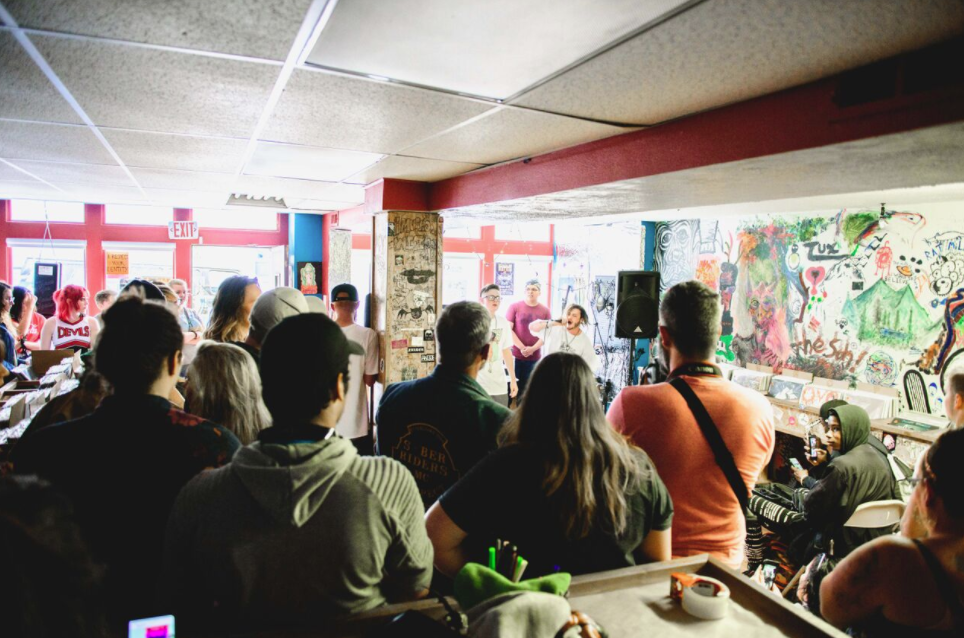
Revitalizing Rio Grande
“You have two options: either you can go to jail, or, we can check you into a treatment facility.”
Law enforcement officers found themselves laying out these options to hundreds of individuals in the Rio Grande Neighborhood last August after crime, violence and general lawlessness hit a tipping point. Open air drug dealing, criminal mischief, violence against homeless individuals and other nefarious activities were all too common sights for anyone who happened to be in the area. Largely stemming from a combination of mental health problems, an affordable housing shortage and a nationwide opioid crisis, the state of 500 West was comparable to the fictional setting of Baltimore’s Hamsterdam in HBO’s crime series “The Wire”.
To add fuel to the fire, jail beds were sparse and arrests were reserved only for the most violent offenders. Law enforcement’s hands were cuffed as members of a drug cartel continued to prey upon a vulnerable population. The boiling point came in the summer of 2017 as a string of homicides and shootings rocked the Rio Grande neighborhood. Leaders from the State, City and County teamed up with local service providers and the police to come up with a plan to remedy the unsustainable situation on 500 West. What transpired was an unprecedented three-step, multi-agency effort that would help transform the neighborhood.
Nearly 10 months into Operation Rio Grande, we caught up with four individuals who have been directly affected and involved in the operation to understand the changes that have happened in the neighborhood.
Wendell Rivera - Odyssey House
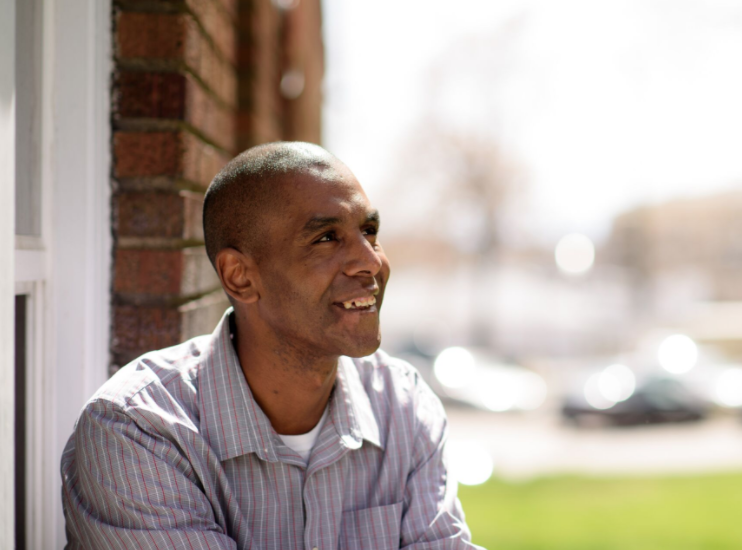
Also known as “the block” by its residents, the Rio Grande neighborhood served as a haven for those suffering from drug addictions as well as those who were simply down on their luck. Among those suffering from addiction was Wendell Rivera.
“During my time on the block, we did what we wanted, when we wanted, how we wanted to. Nobody could say or do anything, not even the cops.” Wendell had been living in the neighborhood for two years before Operation Rio Grande started. Like many of its residents, Wendell was addicted to heroin which was always readily available.
A father of two children, Wendell was a graduate of the Odyssey House where he had already worked on his addiction. After a string of bad luck, Wendell fell into to using once again. “I had sold everything. I lost our house, our car and before I was about to become completely homeless, I found a place for my kids to live. Starting that night and over the course of the next two years, I indulged heavily in my criminal behaviors. I was shoplifting and robbing so that I could use.”
Going in and out of jail was just part of the routine for many including Wendell, but the threat of arrest didn’t stop them from scoring drugs on a daily basis. “I was probably on my 20th arrest down there and I knew if I wanted to ever have a chance at being a father again I had to get sober.” After encouragement from his Odyssey House peers and one final arrest in which Wendell was offered treatment or serious jail time, he chose to return to the Odyssey House. “I knew if I didn’t take it I could die out there and never see my kids again.”
While he chose treatment as his way out, Wendell says he wasn’t too sure about Operation Rio Grande when it started. “I hated it and I was outraged, but I think that came from me being resistant to the help I needed.” In the months that Wendell has become clean, his perspective has changed. “I know there’s a lot of good people down there suffering and I hope they get the help they need, so I’m all for it. I know the people behind the curtains are rooting for us.”
Now well over 100 days sober and working as an Onboarding Coordinator for the Odyssey House, Wendell looks to keep moving forward. He hopes to eventually return to school, continue his work and see his kids.
Matthew Melville - Catholic Community Services
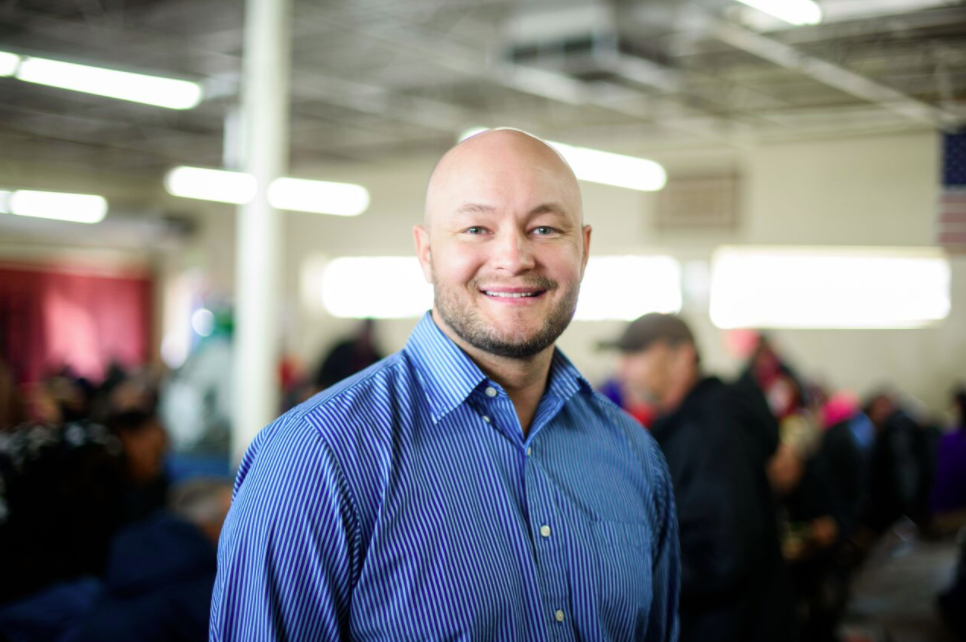
Situated in the heart of the Rio Grande neighborhood, the Weigand Center and St. Vincent de Paul Dining Hall serve about 450 people experiencing homelessness every day. Providing shelter from the elements, holding job training and dishing out lunch and dinner are just a few of the services they offer to help individuals get back on their feet. When problems were at their worst, employees and people seeking services often feared for their safety.
“It was to a point where some of our employees even had knives pulled on them,” said Matthew Melville, who serves as the homeless services director for Catholic Community Services. “It can be a depressing place down here; people will reach for whatever they can get to cut the pain. The dealers were always here to prey upon our clients and those who were down on their luck.”
The services that Melville and his team provide are key for individuals who want to take the first step towards leaving homelessness. With a drive-thru drug trade and violence at their actual doorstep, most individuals and employees were hesitant to enter the neighborhood. “We had families down here that wouldn’t even dare walk across the street to go to the Road Home. People would say, ‘Hey, do you work here? Can you walk me over?’... because it was just that bad.”
But, that was then, and this is now. Thanks to a “safe space” road closure created by the operation, visitors of the Road Home and Weigand Center are using the shelters at a higher rate. “We’re averaging about 100 extra people a day that we wouldn’t have seen before the operation.” Melville credits this to the Operation Rio Grande efforts. “What we have now is a culture of compliance. The neighborhood has been completely transformed. I’m not offered drugs anymore, and violence has been cut down a lot.”
While there have been visible and quantifiable improvements in the neighborhood, there is still plenty of work and healing that remains. “We need more funding for treatment beds, and we need to continue the dignity of work phase. We’ve been hyper-focused on jobs and housing down here.” Phase three of Operation Rio Grande focuses on exactly that. The Dignity of Work phase prepares individuals for the workplace through workshops, education and ultimately job placement. In addition to continuing the efforts that have taken place already, Melville stressed the importance of public support by underscoring that this is a community-wide issue, not downtown’s alone. “There are many different ways the community can give. You can give time, money or simply by going to your community council meetings and staying informed.”
Sergeant Sam Wolf - Salt Lake City Police Department
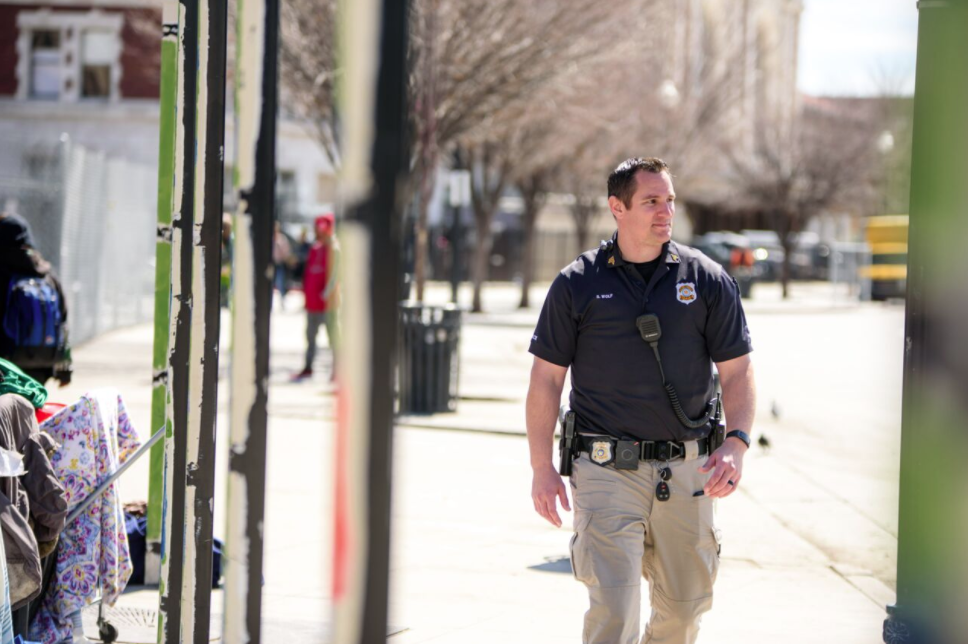
When Sergeant Sam Wolf patrols 500 West, he does so by calling its residents by their names and nicknames. “Hey Widow, is there anything we can do for you today? Edie, is there any chance we can connect you with services?” It’s safe to say that few know the Rio Grande Neighborhood quite like Sergeant Wolf does.
Before being promoted to Sergeant of the Community Intelligence Unit, Wolf served as the head of the SLCPD Bike Squad. His team was based out of the Community Connection Center directly across the street from the Road Home shelter on 500 West. Before Operation Rio Grande, there was little police could do to enforce the law and help those who needed it. Jail space was at a premium with beds reserved solely for the most violent offenders. This often left police without the power of arrest, opting instead to writing a ticket or arresting and releasing. Wolf says things have changed dramatically.
“Out here, there were no rules,” Wolf says. “I used to go up and down 5th west every day, and I’d count 100-plus makeshift shelters and tents. Now, it’s about 10 to 15. The reduction has been huge, and you can see it.”
Wolf attributes this reduction in the population to additional funds and officers from Operation Rio Grande, as well as the combination of arresting criminals who took advantage of the homeless population and providing proper services to those who need them. Officers and social workers can now better identify the needs of new clients, shelter-resistant individuals and criminal elements in the neighborhood.
The neighborhood certainly appears safer, but is it? Crime in the neighborhood is down a staggering 48 percent in the last year to date. Paired together, the numbers and visuals don’t lie.
For Wolf and his team, less crime means more time to help. “One of our social workers \ told me about an individual we’ve met with and offered services to 56 times. Finally, on the 57th time, they accepted help.” More help is on the way with preventative programs and three new needs-based resource centers that will open around the Salt Lake Valley in 2019.
Matt Bourgeois - Rio Grande Cafe
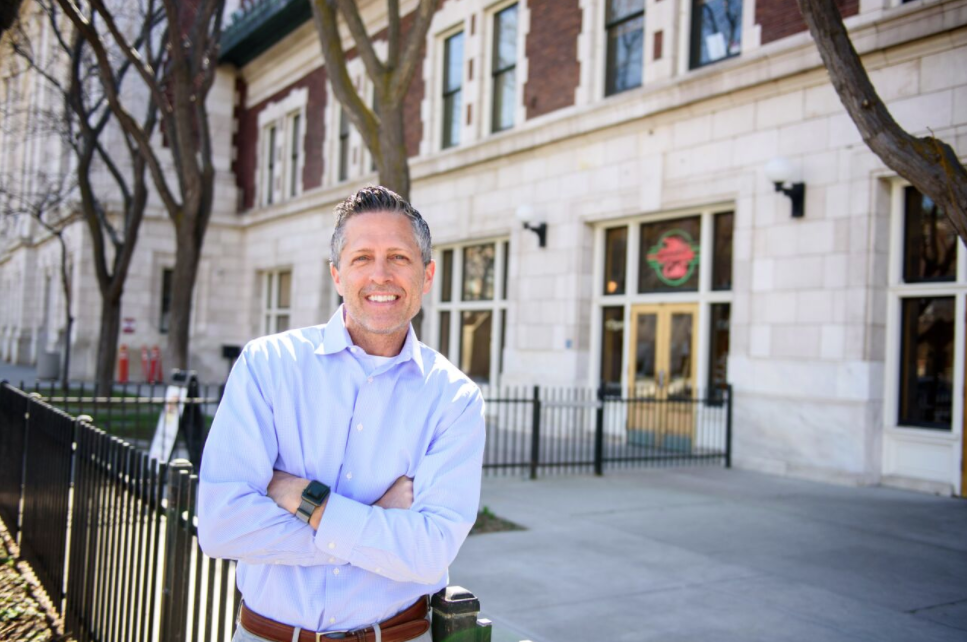
From ghostly tales of the purple lady, to the taco lady and the toy railroad tracks that hover over the bar, Rio Grande Cafe has been a staple in the downtown food community since Pete Henderson opened up shop in 1981. Now under new ownership, the cafe has experienced the highs and lows of the neighborhood while maintaining their traditional Mexican faire.
When Matt Bourgeois and his partners purchased the Rio Grande Cafe a year ago, the state of the neighborhood would have scared away most investors. However, Bourgeois knew that the neighborhood had major potential. “We thought we’d have to deal with the situation down here for about two, maybe three years before it would improve. When we bought this place the optics were terrible, you’d park in your car and step over needles just to get into the restaurant.”
Two years turned into less than one, and the results of the operation have been beneficial for the restaurant and its neighbors. “I’ve talked to some of the individuals who are staying at the shelter and they feel safer, we feel safer—so from our perspective down here it’s been a huge win.”
When Bourgeois thinks about the future of the neighborhood, a smile comes over his face as if he knows something the rest of us have yet to find out. “There’s $8 million going into a neighboring hotel, $100 million into The Gateway and we have the proposed Public Market. I’m excited—this should be one of SLC’s best neighborhoods, and I think it will be.”
How You Can Help:
Serve a meal at St. Vincents de Paul. Contact ccsutah.org and check under the volunteer tab.
If you see something, say something!
Please do not give to panhandlers. Help them more by giving directly to homeless service providers.
Learn more about Operation Rio Grande at operationriogrande.utah.gov
Turn spare change into real change at Red HOST (Homeless Outreach Service Team) parking meters around Downtown SLC.
Volunteer at resource centers.
Give money to service providers.
Stay informed by going to your community council meetings.
Meet Thy Neighbor
Dining out is something most people plan and look forward to with anticipation. Whether a celebratory event with family or wine-soaked get together with friends, eating at a restaurant is something almost everyone can relate to and enjoy. But how the final experience shapes up is often as much about the environment as it is about what we order off the menu.
When communal dining debuted in fine dining establishments in downtown Salt Lake in 2012, it seemed more of an edgy trend than a necessity. Fast forward a half decade and how does communal dining sit with Salt Lake residents and visitors now? Are more restaurants sizing up the idea to save space and pack more diners in when possible or have guests rebelled against forced mingling with strangers?
Attitudes toward communal dining seems to be all in the eye of the beholder. Oftentimes, the price point of the restaurant and the time of day can both weigh heavily on the apparent success of the concept, given its longtime prevalence at college pizza joints and barbecue restaurants for decades.
Counter service coziness
When diners stand in line to order food at a counter and then seat themselves—a la fast-casual dining—it’s common to sit next to strangers at a bar or communal table designed to maximize space and ease seating delays. At Siegfried’s Delicatessen (20 W. 200 South) and Beer Bar (161 E. 200 South), the concept couldn’t seem more natural. Sit down with a beer and a sausage and meet some new friends over a lunchtime repast or post-work supper.
Originally opened in 1971 and still Salt Lake’s only authentic German deli, Siegfried’s dishes up wiener schnitzel, bratwurst, corned beef Rubens and more for lunch and dinner. Order cafeteria style and sit at the bar along the window front or at tables located throughout the store. Here you’ll find some of the most diverse diners in the city—from local business people to Europeans shopping for specialty meats and items and everyone in between.
Utah native Amy Rasmussen says Siegfried’s is the perfect communal dining destination. “The price point and lunch counter definitely make it okay,” she says.
Down the street, Beer Bar also plays off a German-inspired beer garden feel with dozens of beers from around the world on tap and a chef-driven menu of sausages and fries. The interior is almost exclusively dedicated to picnic table communal-style seating to bring people from all walks of life together.
Tim Haran, the founder of utahbeernews.com, a website that strives to share stories important to Utah’s craft beer community, finds the Beer Bar’s communal format enjoyably tees up casual conversation with friends—or strangers. “The fact that Beer Bar has long rows of picnic tables where different groups can sit next to and across from each other makes it easy to strike up conversations over a pint or two,” Haran says. “It’s fun because, for me, the conversation usually starts and centers on beer but then it expands into a variety of different topics such as living in Utah, nearby restaurants, politics and sports. The communal seating definitely helps people gain perspectives they might not get otherwise.”
But as the price point of potential restaurant options rise to the level of fine dining, restaurants like The Copper Onion, Pallet and even White Horse have implemented communal dining for other reasons—and the popularity of the locations may become the determining factor in the seating arrangement.
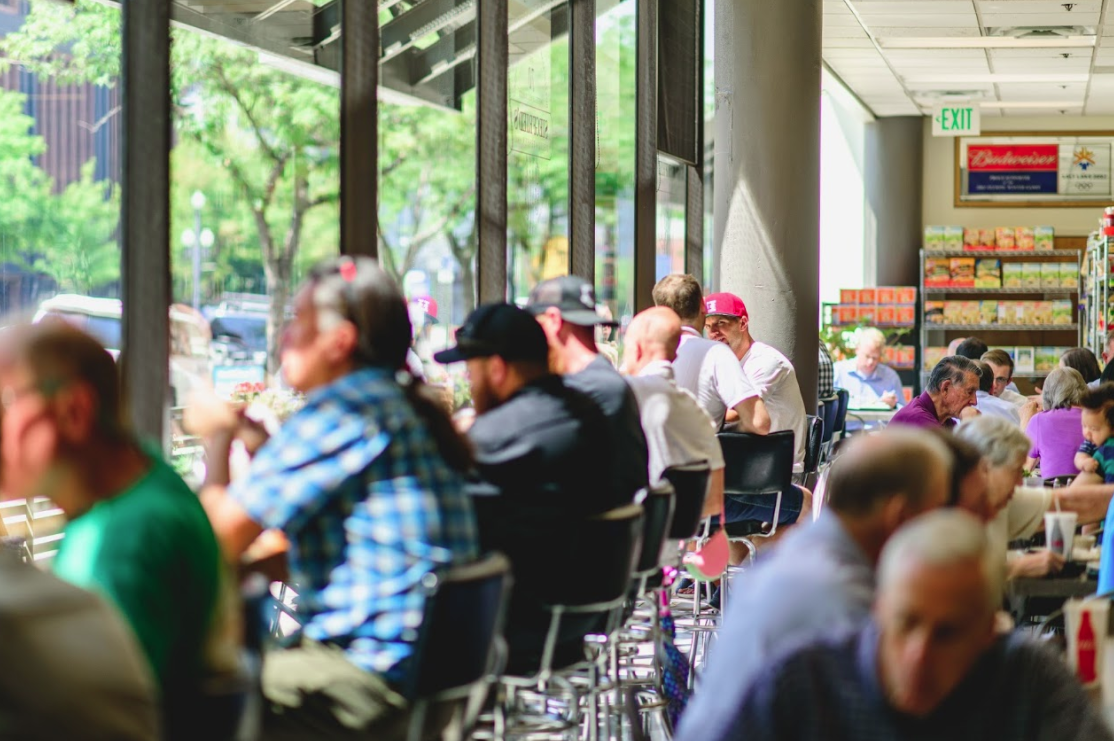
Share or wait
White Horse Spirits & Kitchen (325 Main St) is a bar and brasserie serving high-end cocktails and sharable dishes. As evening sets, downtown business people and convention goers alike flock there for truffle salted potato chips and buffalo roasted cauliflower—often finding themselves sharing communal tables that front the kitchen in standing-room-only conditions.
Similarly, in the heart of downtown, diners are still lining up to experience The Copper Onion (111 E Broadway), which opened in 2010—and one of the fastest ways to do so is to sit down to a meal with strangers. Chef and owner Ryan Lowder brought the communal dining concept from New York to create an environment more urban in nature in which guests could experience his award-winning and locally sourced American cuisine. Diners regularly find themselves asked to make the choice between a long wait for a private table at brunch, lunch or dinner or immediate seating at the shared table. When that’s the case, a shift in attitude can overcome the lack of intimate space.
“It reminds me of cruise ship dining,” says Sybille Schmidt, a German native who has lived and dined around the world and now calls Utah home. “We always enjoy sitting and meeting other people, light conversations and sometimes it turns into friendships. You never know who you’ll sit with, who you’ll meet or what stories they have to share. It’s for sure not everybody’s thing though.”
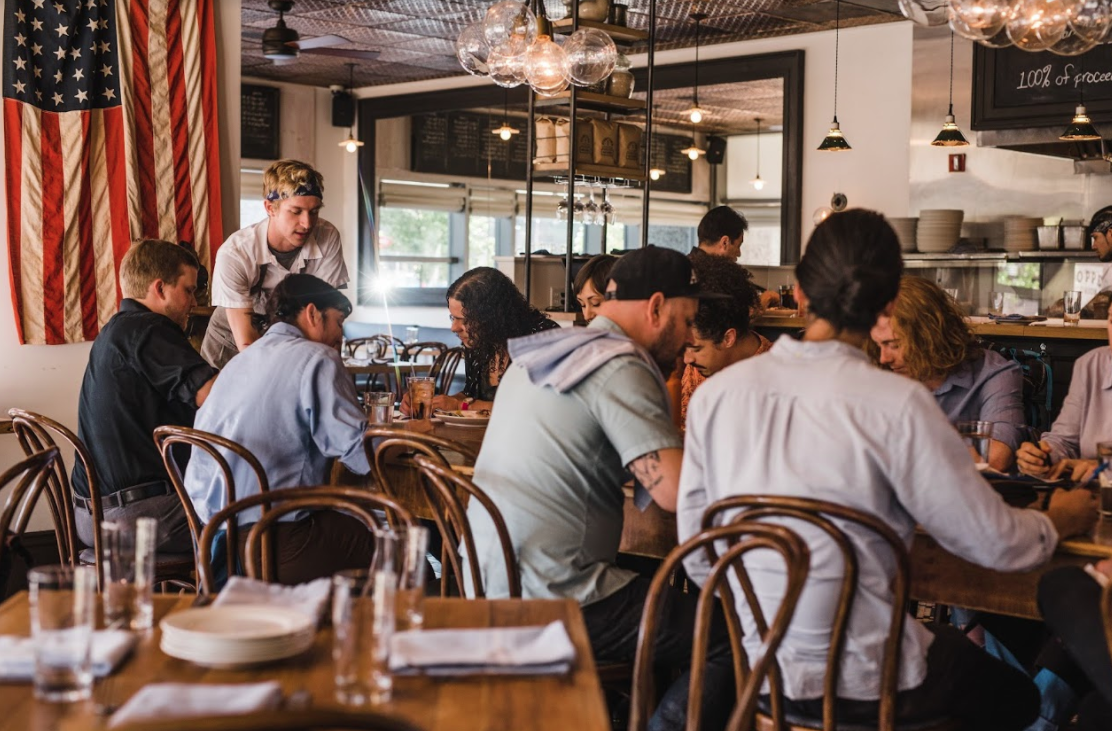
Angie Gallegos, who moved to Utah from Michigan to attend BYU in the early 1980s, laughs, “Communal dining reminds me of church and how the pastor makes us turn and greet the people next to you. I don’t enjoy it unless they are more interesting than my current tablemates.” She does, however, enjoy sitting down at a communal table while on vacation. “It’s fun to visit with locals and get advice for other places,” she says, and finds it an intriguing way to get insights about the community.
West-side eatery, Pallet (237 S. 400 West), is one of the best places to commune with the locals. Open for dinner only, Pallet serves creative new American cuisine that’s as intriguing as the 100-year-old building its housed in. Installed at the center of the restaurant are two long, communal tables made from reclaimed wood. The tables were included at the suggestion of the restaurant’s interior designer in the hope that they would urge neighborly interaction and shared experiences with others—but also offers options for larger parties—in addition to patio dining and individual tables surrounding the periphery of the tightly spaced restaurant. With a focal point of the mirrored bar and dynamic design elements, guests at the communal tables are often brought together first by the awe inspired by their visual surroundings.
As Salt Lake continues to grow and attract more residents and visitors each year, time and space at Utah’s best restaurants will remain at a premium. In turn, downtown restaurants will continue to get creative with the most effective way to satiate as many customers as possible while providing an atmosphere that complements the cuisine.
When faced with a communal dining option, Karin Palle, a business consultant and former restaurant owner in Salt Lake City, suggests that guests keep an open mind about the experience. “You need to go into it with a ‘wonder who I’ll sit next to today’ attitude. As an athlete who traveled when I was younger, we never knew who we would sit with and what we would learn. You definitely don’t go to a communal dining experience for an intimate dinner or special occasion. But if you are going to have a lighthearted conversation with friends, I embrace new opportunities to meet people.”
Japantown - History and Heritage on 100 South
The street signs on the sleepy corridor of 100 South between 300 West and 200 West read “Japantown.” This corridor is home to the Salt Lake Buddhist Temple, the Japanese Church of Christ--who are celebrating their 100th anniversary, the vibrant Nihon Matsuri, Obon, and other street festivals, and a small, meditative Japanese-style garden. But what these street signs don’t convey is the long history and struggle of the neighborhood they mark, as the current iteration of Salt Lake’s Japantown has seen many changes to the downtown community they have called home for more than 130 years. 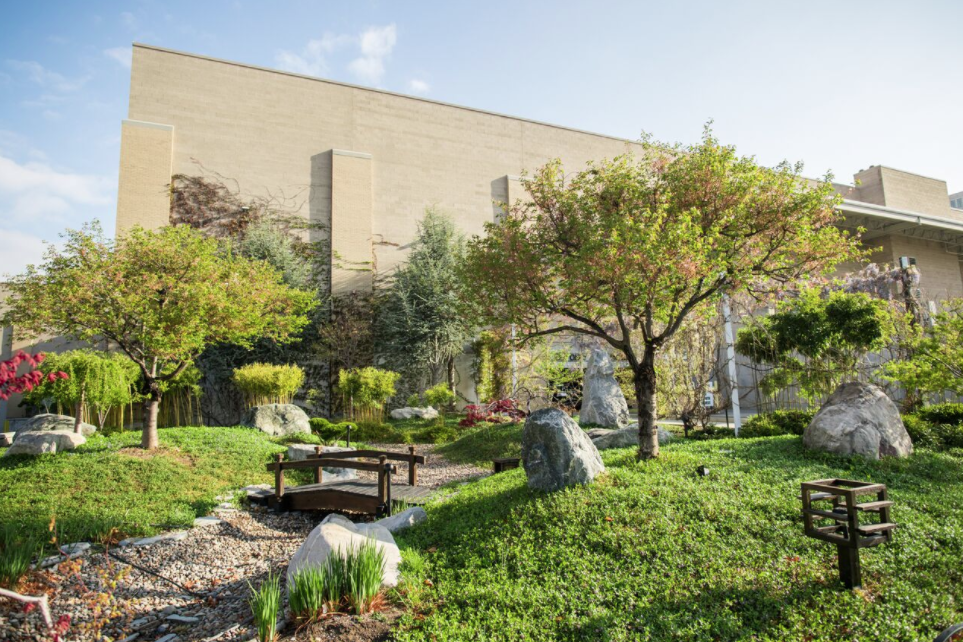
In the late 1880s, Utah received its first generation of Japanese immigrants—known as Issei—who answered the call for labor demands in Utah’s mining and railroads industries. In 1902, Edward Daigoro established the E.D. Hashimoto Company one block north of what would become Japantown. Daigoro provided coordination between Utah industries and Japanese laborers, also providing the Issei with various supplies, Japanese food, payroll, and intermediary services with the local government.
By 1910, the Utah Japanese population was more than 2,000 strong, and many families made their way to Daigoro’s emerging Salt Lake City neighborhood. This area, defined by the boundaries of South Temple to State Street, 400 South to 700 West, quickly developed as the core of the Issei community. The neighborhood boasted noodle houses, hotels, bustling cafes, apartments, bathhouses, variety stores, grocery stores, confectioners and fish markets. 1912 saw the construction of Salt Lake’s first Buddhist temple, located at 250 West South Temple and, in 1918, the Japanese Church of Christ was built across the street. Two newspapers—The Utah Nippo and Rocky Mountain Times—served the Japanese community, offering both Christian and Buddhist perspectives. The Utah Nippo bought the Rocky Mountain Times, and in 1931, began publishing the front page in English to accommodate the Nisei, or second-generation residents, who were becoming less fluent in the Japanese language.
World War II Community Impacts
Before World War II, the residents of Japantown developed a strong, compassionate community that continued to grow, thrive, and benefit Salt Lake. But this environment drastically changed, as the American mindset was altered after the actions of World War II, with the adoption of policies that had major impact on the community of Japantown. As some families were able to stay in their homes, though under intense F.B.I. scrutiny, many of Japantown’s community leaders were harassed, detained, and sent to internment camps. The Topaz internment camp in Millard County was home to approximately 8,000 Japanese persons.
The community in Salt Lake’s Japantown empathetically donated thousands of dollars in books, equipment and resources for educating the children interned at Topaz. Under federal orders, both the advocacy organization Japanese American Citizens League (J.A.C.L.) and the headquarters of the Buddhist Missions of North America, originally based in California, temporarily found refuge in Salt Lake. This atmosphere also saw The Utah Nippo develop as a crucial voice for Japanese Americans across the country, having wide distribution among internment camps and more than 7,000 subscribers in peak war years.
Life after Topaz saw many Japanese—previously living in California—joining the community in Japantown, as well as a number of the soldiers from the U.S. Army’s majority Japanese 442nd Infantry Regiment who, while being treated in Utah hospitals, experienced the hospitality of this community. In 1950, the first of the Issei received their American citizenship. As new generations of Japanese Americans found themselves engrained in communities throughout Salt Lake City, these Issei remained the primary residents of a neighborhood still housing bustling retail shops and two cultural hubs—the Buddhist and Christian churches.
With urban renewal on the minds of Salt Lake developers in 1964, a bond to build a new Salt Palace was publically approved. The identified corridor for the new development was in the heart of Japantown, a dense and bustling area home to many cafes, social clubs, apartments, businesses, markets, hotels, and a movie theatre. Preservation committees formed with the interest of protecting the neighborhood, but ultimately could not gain enough support to save Japantown or influence developers and city leaders to find an alternate location. The construction of the new Salt Palace displaced many residents and businesses of Japantown and ultimately destroyed their vibrant community and sense of identity and belonging. Plans to reestablish and support the newly displaced community and businesses—such as Salt Lake City developing a “Little Tokyo” or the local Japanese-American community establishing a Far East Cultural Center—never materialized, causing those displaced to either start over in new parts of Salt Lake or close their businesses permanently.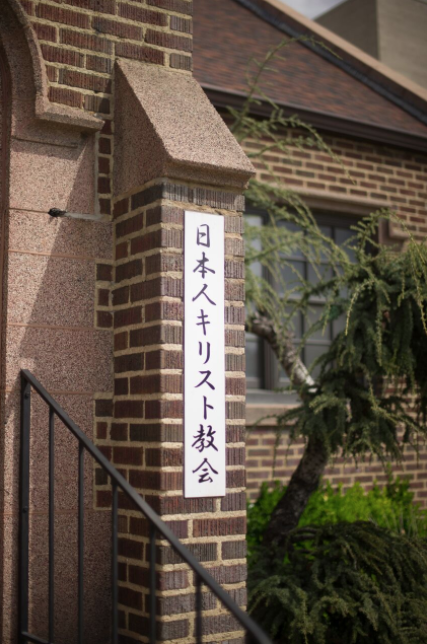
Japantown Recognition
Fast-forward 40 years and Japantown finally received some deserved recognition. In 2007, the corridor of 100 South between 300 West and 200 West was ceremoniously named “Japantown Street” and, located east of the Japanese Church of Christ, a small, Japanese-style garden paying homage to Japanese community leaders was included in the Salt Palace expansion of that same year. Though it’s vitality can never be restored, as further Salt Palace development has squeezed the areas around both Japantown churches, community leaders are working to advocate for and reimagine Japantown. Sen. Jani Iwamoto, D-Holladay, and retired 3rd District Judge Ray Uno formed the Japanese Community Preservation Committee to preserve the legacy, contributions and voice of Japantown, and to ensure that this history is respected as new commercial and residential developments in this area pose a possible further encroachment upon both the Buddhist and Christian churches and the future of their Nihon Matsuri and Obon street festivals.
Obon & Nihon Matsuri Celebrations
In 1936, at the Salt Lake Buddhist Temple, the community held its first Obon celebration. The Obon holiday is a Japanese Festival of Joy similar to Memorial Day, with people visiting their hometowns, their families and the graves of loved ones. This first celebration united the local Japanese population, attracted outside interest, and raised funds for community projects. Now in its 82nd year, this free, annual tradition—taking place this year on July 14th—will feature Japanese food, vendor booths selling kimonos, umbrellas and other Japanese items from the temple's newly opened bookstore, the popular Taiko drum performers, and the celebratory community dance.
Another beloved Salt Lake event is the Nihon Matsuri. This free and open to the public annual festival celebrates Japanese and Japanese American culture, history, traditions, and the legacy and contributions of the Japantown community. April 28th will see the corridor of 100 South activated with a day full of live performances—featuring an exclusive fashion show presenting traditional and contemporary kimonos designed by Sueko Oshimoto of KimonoSK, special musical guests the Taikoza Group, amazing food, tea ceremonies, vendors with traditional Japanese clothing, decorations and gift items, alongside historical and cultural exhibits, and a cosplay contest. There will also be free children’s activities like face painting, coloring pages, kite making and more.
Concurrent with Nihon Matsuri is the Raymond S. Uno Celebration, which takes place on Thursday, April 26. Presented by the J. Willard Marriott Library Special Collections, University of Utah and The Raymond S. Uno Legacy Celebration Committee, this annual celebration pays tribute to Judge Raymond S. Uno’s lifetime of efforts as an advocate of human and civil rights, especially social justice for all persons, regardless of racial, cultural, gender identity and religious difference. The evening will feature a dinner and a special presentation by Mr. Dale Minami, a partner with Minami Tamaki LLP, who was involved in the civil rights litigation of Asian Pacific Americans including the Korematsu vs. United States lawsuit that overturned a 40-year old conviction for refusal to obey exclusion orders aired at Japanese Americans during WWII. Special achievement awards will also be presented to Archie Archuleta, J. Boyer Jarvis and Margaret Yee.
With the gaining popularity and reach of its various festivals and celebrations, the informative and influential workshops, outreach, and faith services offered both by the Salt Lake Buddhist Temple and the Japanese Church of Christ, alongside an increased public awareness of Japantown’s role in Utah’s history, a stronger stance on advocacy and support for this community in the proposed new commercial and residential developments in this corridor need to be taken. Japantown’s legacy and impact in Salt Lake should finally be recognized and celebrated, not forgotten.

